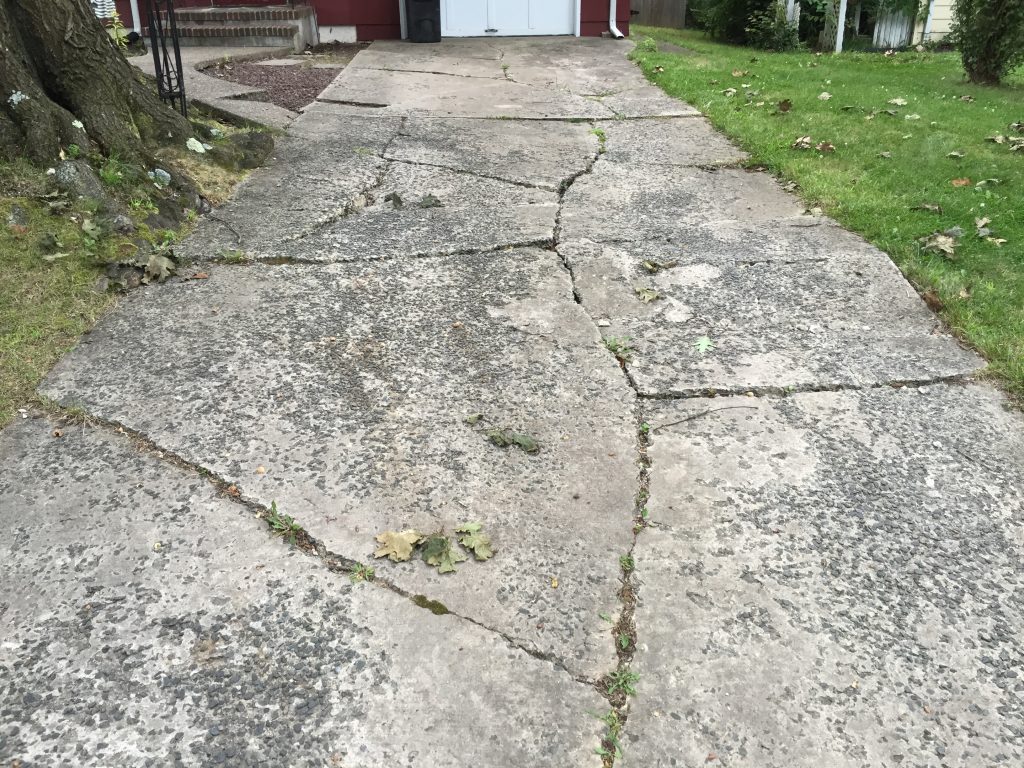Without proper consideration and monitoring, tree roots can cause damage to buildings, paths, driveways, and underground infrastructure

A tree’s influence starts, literally, at the roots. The roots will continue to grow as a tree matures, extending towards anything that will maintain the tree’s life. Roots typically seek out moist soil and will often find entry into old or damaged pipes including stormwater drains, sewage pipes and water mains.
Seasonal change also influences how trees interact with the built environment. During warmer months, soils can dry out with the lack of moisture causing reactive clays to shrink. In extreme cases, shrinking soil can lead to significant ground movement, subsidence and foundation settlement.
Unfortunately, trees can exacerbate this process. In their hunt for moisture, root systems will extend through dried soil, desiccating the ground and absorbing remaining water from the already dry earth.
The combination of dry soil and thirsty tree roots is the perfect recipe for ground movement, and the appearance of worrying subsidence symptoms, including cracks in brick walls, distorted timber frames, and doors and windows that jam.
Examples of different causes of subsidence to buildings, including those triggered by tree roots, can be viewed on Mainmark’s interactive house: www.mainmark.com/subsidence-problems-around-homes.
Understanding the cause of problems is essential before a viable solution can be found. There are several factors to consider when determining whether trees could be the ‘root cause’ of damage to buildings.
Groupings
When trees are planted closely together, they are forced to compete for moisture and nutrients in the same area of soil. The larger the group of trees, the greater the impact on soil drying out in the surrounding area.
It is therefore more likely for homes, offices and infrastructure located near large groups of trees to experience effects of adverse ground conditions as the trees absorb more moisture which can contribute to greater ground movement.
Tree types
Tree activity varies across the year depending on its type, so it’s important to identify the trees that are growing near important structures.
Deciduous trees, for example, hibernate in winter and re-grow in spring. This lifecycle means their water demand is often highest during drier months, which has the effect of increasing the magnitude of soil shrinkage.
Characteristics
A tree’s physical characteristics can determine how much moisture its root system is likely to absorb, but it’s not always just in relation to its overall size.
Research into a tree’s influence on ground conditions has indicated that it is the leaf area of the tree rather than its height that ultimately determines its moisture demand. Therefore, thick or tall trees aren’t always the culprit for dry soil; it’s the amount of foliage that can indicate how much water a tree needs to sustain itself.
Surrounding environment
Roads, footpaths, and larger scale developments with limited green space can also prevent moisture from reaching the soil underneath. This lack of permeability can cause dry soil conditions and may force tree roots to draw on the limited moisture available, intensifying soil shrinkage and ground movement.
This is common in urban areas where trees are planted for aesthetic or ‘greenscaping’ purposes, without considering the degree of exposed soil and abundance of moisture.
The risk of roots affecting the structural integrity of our buildings should not be a barrier to planting trees or moving to an area where trees are in abundance. Understanding tree behaviours and their relationship with the surrounding environment can help to manage their influence and reduce the likelihood of damage.












